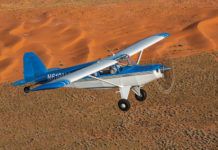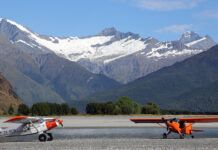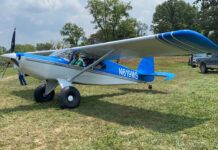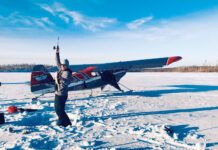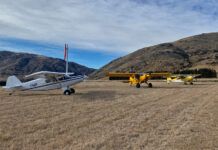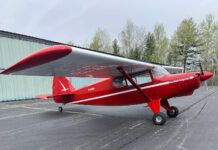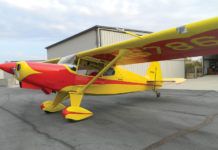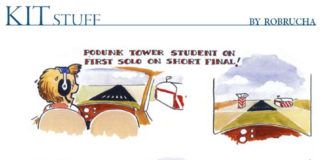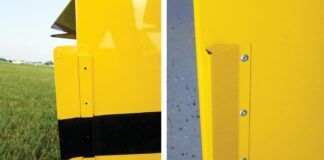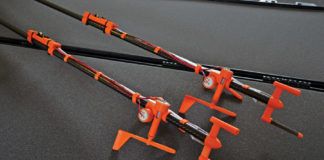Bearhawk Aircraft announced today receipt of the first FAA authorization for transition training in a four-place Bearhawk amateur-built airplane. Bearhawk builder, owner and certified flight instructor (CFI), Jared Yates of Hickory, North Carolina has received a Letter of Deviation Authority (LODA) from the FAA allowing him to provide flight instruction in his four-place Bearhawk. The LODA allows builders and owners of Bearhawk aircraft to hone their pilot skills through a structured transition training program.
A study by the General Aviation Joint Steering Committee has determined that a lack of transition training has been cited as a factor in many general aviation accidents. While pilots recognize transition training as necessary when moving to higher performance, complex, tailwheel, or multi-engine airplanes, training is also essential for pilots moving from traditional aircraft to amateur-built aircraft. The study recommends a sound transition training program involving a structured course following a written training syllabus.
Jared Yates is the owner and builder of N805TB, a four-place Bearhawk built from a kit. Yates is a career pilot with thousands of hours of flight experience in airplanes large and small. He holds CFI and Air Transport Pilot certificates. Yates is also the editor of Bear-Tracks Newsletter, which he produces in conjunction with Bearhawk designer Bob Barrows.
The Bearhawk in which Yates will provide the training features a Lycoming O-360 engine with a constant speed propeller. Yates’ training program will help new Bearhawk pilots make a safe transition from aircraft they have previously flown to the Bearhawk, an aircraft described as the most capable heavy hauling utility homebuilt airplane available.
Transition training is intended to teach the pilot what is different about the aircraft, and can include its installed equipment. A syllabus addresses specifics of the aircraft’s systems with emphasis on how characteristics of the aircraft differ from those in aircraft the pilot has already flown. Additionally, instruction covers normal, abnormal and emergency procedures as well as performance characteristics such as what to expect on takeoff and landing, climb, cruise, descent, and glide. Training will also address aircraft limitations, such as weight and balance, speeds, wind limits, maneuvers, etc.
To get the greatest benefit from transition training, the committee recommends hiring an instructor who is current, qualified, and thoroughly knowledgeable about the airplane. Furthermore, a good instructor will have the ability to change the arrangement of the subject matter and shift the emphasis to fit the qualifications of the transitioning pilot, the characteristics of the aircraft or equipment involved, the circumstances of the training environment, and the goals of the transitioning pilot.
Mark Goldberg, owner of Bearhawk Aircraft, commented on the LODA announcement, “Bearhawk Aircraft is pleased that the FAA recognizes the importance of transition training for the highly capable four-place Bearhawk airplane. The LODA allows us to offer a structured training program for new Bearhawk pilots. This will improve overall safety among pilot/owners and increase their ability to use their aircraft to the full extent of its capabilities.” For more information about pilot prerequisites or to schedule training, visit www.bearhawktraining.com.
Bearhawk Aircraft manufactures high-quality quick-build aircraft kits for the four-place Bearhawk, two-place Bearhawk Patrol and Bearhawk LSA (with tandem seating). The Bearhawk designs, crafted by engineer Bob Barrows, have in common excellent performance and superb flying characteristics. Bearhawks are known for their short field capability, higher than expected cruise speeds, and very gentle slow speed manners. For utility and recreational use, Bearhawk aircraft are flown by customers around the world.
For more information on Bearhawk Aircraft, visit www.bearhawkaircraft.com, or contact Bearhawk at [email protected].

